Commercial vehicle accident claims are often more complex than traditional car accident cases, especially when it comes to understanding and navigating insurance coverage. For attorneys representing accident victims in commercial truck accidents, for example, a firm grasp of the nuances in commercial policies is essential to maximizing recovery for accident-related expenses and securing fair compensation.
Insurance coverage in commercial vehicle accidents may be layered, split between multiple parties, or even intentionally obscured by multiple insurers and defendants hoping to minimize liability.
Keep reading to learn more about the key elements of commercial vehicle insurance coverage, the complications that arise in litigation, and how attorneys can effectively build strong claims for compensation.
The Basics: Commercial Auto Insurance Policies
Unlike a personal auto insurance policy, commercial auto insurance policies are typically structured to account for higher coverage limits, multiple drivers, and additional exposures due to the nature of the business. Understanding commercial truck insurance (or any other form of business auto coverage) is crucial to effective litigation.
These policies may include:
- Liability coverage for bodily injury and property damage
- Collision and comprehensive coverage for the vehicle itself
- Medical expenses or personal injury protection (PIP)
- Uninsured/underinsured motorist coverage
- Cargo insurance, if the vehicle is transporting goods
One of the first tasks an attorney must undertake in a commercial vehicle accident case is determining the scope and limits of the policies that apply to serious injuries. It’s important to remember that the party responsible for the accident may not be the only one with applicable coverage. Employers, contractors, vehicle owners, and third-party logistics providers may not only be held potentially liable for the accident itself, but may also have insurance coverage in commercial vehicle accidents that can come into play.
Who Is the Insured? Corporate Layers and Policyholders
In commercial settings, ownership and control of a vehicle can be distributed across various entities. The vehicle may be owned by a leasing company, driven by a subcontractor, and assigned to work for a parent trucking business or franchisee company. Each of these entities may carry some form of commercial truck insurance (or other vehicle insurance).
For example, a delivery truck driver working for a third-party courier may be involved in a crash. The vehicle could be registered under the name of a leasing company, while the driver is an independent contractor, and the delivery job is for a major retail chain. Each layer in that arrangement potentially introduces a different insurance company policy or set of policyholders.
To navigate this, attorneys must obtain and review every Certificate of Insurance (COI) relevant to the vehicle, the driver, the employer, and any third-party affiliates. Discovery efforts should also include policy declarations, endorsements, and any exclusions that could impact coverage.
Vicarious Liability and the Role of Employers
In many commercial accident cases, the doctrine of respondeat superior allows plaintiffs to hold an employer liable for the negligent actions of its employees. This creates a direct path to higher policy limits, since companies typically maintain more robust commercial auto coverage than individuals.
However, defendant-employers may attempt to argue that the driver was acting outside the course and scope of employment. For example, if the driver had completed their route and taken a detour for personal errands when the accident occurred, the employer might claim they are not liable.
To counter this defense, lawyers must gather compelling evidence. GPS records, delivery schedules, fuel logs, and internal communication (such as texts or dispatch notes) can demonstrate whether the driver was still engaged in work duties at the time of the crash.
Independent Contractors and the “Control” Test
A growing number of companies rely on independent contractors to handle deliveries and other commercial driving tasks. In these cases, the defense may argue that the driver is not a formal employee and therefore not covered under the company’s liability policy.
Courts often use a “control” test to determine whether a worker is an employee or a contractor. This test evaluates how much control the company had over the driver’s schedule, tools, routes, uniform, and customer interactions.
If attorneys can show that the employer (for example, a trucking company) exercised significant control, then the court may disregard the contractor label and find the company vicariously liable. This opens the door to broader insurance coverage and deeper financial recovery for the plaintiff.
Primary vs. Secondary Coverage
In cases involving multiple policies, determining which policy is primary and which is excess or secondary becomes a major point of contention. The primary policy pays first, while the excess coverage only kicks in if the primary limits are exhausted.
Some policies contain “other insurance” clauses that attempt to shift the burden onto other insurers. These clauses often conflict when multiple carriers are involved, requiring courts to interpret priority based on policy language, case law, and the factual scenario.
To resolve coverage disputes, attorneys must:
- Examine each policy’s declarations page
- Identify any “other insurance” or excess clauses
- Compare endorsements that modify the policy’s application
- Request deposition testimony from insurance representatives to clarify their interpretations
This level of analysis is critical in commercial accidents where damages are likely to exceed a single policy’s limits.
MCS-90 Endorsements and Federal Motor Carrier Coverage
In cases involving interstate commercial carriers, attorneys should determine whether the at-fault vehicle is subject to federal regulations. Under the Federal Motor Carrier Safety Administration (FMCSA), certain motor carriers must file proof of financial responsibility using Form MCS-90.
An MCS-90 endorsement acts as a backstop. Even if a carrier’s policy excludes coverage for a specific loss, the MCS-90 requires the insurer to pay a valid judgment for public liability. This protection ensures that injured parties are compensated, regardless of coverage disputes between the carrier and its insurer.
However, the MCS-90 endorsement applies only under specific circumstances. It’s not a blanket guarantee of coverage. Attorneys should review the carrier’s status on FMCSA’s Safety and Fitness Electronic Records (SAFER) system and determine whether the MCS-90 applies to the vehicular journey in question.
Insurance Policy Exclusions
Insurers frequently include exclusions in commercial auto policies that they may attempt to invoke after an accident occurs to avoid having to provide coverage. Some of the most common “collision coverage” exclusions include:
- Intentional acts
- Criminal activity
- Unauthorized use of the vehicle
- Use of the vehicle outside the covered geographic area
- Use by a driver without a valid license or medical certification
Attorneys must examine these commercial insurance exclusions closely and evaluate whether the insurer’s position is legally and factually sound. It’s not uncommon for insurers to rely on broad interpretations of exclusions in an effort to avoid paying out large claims.
You can be sure that the insurer will explore all its options to avoid having to offer a significant payout in something like a commercial truck accident case. So, prepare your legal team to navigate these potential insurance policy exclusions.
Depositions of company representatives, employment files, and accident reconstructions can help demonstrate that the exclusion does not apply in a given case.
Subrogation and Third-Party Recovery
If a client’s own commercial vehicle insurance provider pays benefits after an accident, they may assert a right to subrogation. This allows the insurer to seek reimbursement from the party at fault. Attorneys should be aware of these claims and negotiate subrogation interests early in settlement discussions.
Coordination with the client’s insurer can also be helpful when liability is contested. Subrogation departments often conduct their own investigations and may uncover evidence that supports the plaintiff’s claim against a third party. Sharing relevant findings can be mutually beneficial, provided confidentiality and privilege are preserved.
Stacking Insurance Policies
In certain jurisdictions, injured parties may be able to “stack” multiple insurance policies to increase the available compensation through additional coverage. Stacking may apply when:
- Multiple vehicles are insured under the same policy
- The injured person is covered under more than one policy
- The driver was borrowing a vehicle from someone else who also has insurance
Stacking rules vary by state and policy. Some insurers explicitly prohibit stacking, while others allow it if the policyholder pays an extra cost for the privilege. Where stacking is available, it can make a significant difference in high-damage cases, especially when catastrophic injury or wrongful death is involved.
Bad Faith Considerations
Insurers who fail to honor their contractual obligations or who unreasonably delay or deny claims may be liable for bad faith. In commercial vehicle accident cases, bad faith can be a powerful leverage point in litigation.
Attorneys should document all communications with insurers, track response times, and scrutinize the reasons given for denial or delay. If a carrier acts in bad faith, additional damages may be recoverable beyond the original policy limits.
Attorneys pursuing bad faith claims must typically show that the insurer:
- Knew or should have known that the claim was valid
- Failed to conduct a reasonable investigation
- Ignored critical evidence
- Acted with disregard for the insured’s rights
Filing a separate bad faith action or adding a claim to the original lawsuit may create additional pressure for resolution.
Contact Walker Advertising for Help Growing Your Firm’s Client Base
Whether you’re a solo lawyer, or a small firm lawyer — or are part of a larger firm with plans for further expansion — it’s important to grow your client base in order to hit your revenue and client growth goals. Here at Walker Advertising, we can help. We operate a number of popular attorney networks (including our Los Defensores and 1-800-THE-LAW2 brands) through which firms are able to access leads for various legal claims.
The leads we acquire through our various online marketing efforts — from social media marketing to targeted web ads — have been pre-qualified by our team so that you aren’t hassled by a flood of leads that are simply not relevant or actionable for your purposes. By accessing these quality leads, you’ll be well-equipped to select the best ones to grow your firm business.
Best of all, you won’t have to spend your valuable time and effort on building out your online marketing efforts. Don’t worry about SEO optimization, trend analysis, or any other complex marketing issues. Instead, use us to access pre-qualified inbound leads, and focus your limited internal resources on providing quality representation to your existing (and new) client base.
Contact Walker Advertising today to connect to a member of our team who can explain how our legal networks can help your firm business thrive in this ever-changing digital marketing landscape.
We look forward to assisting you.






